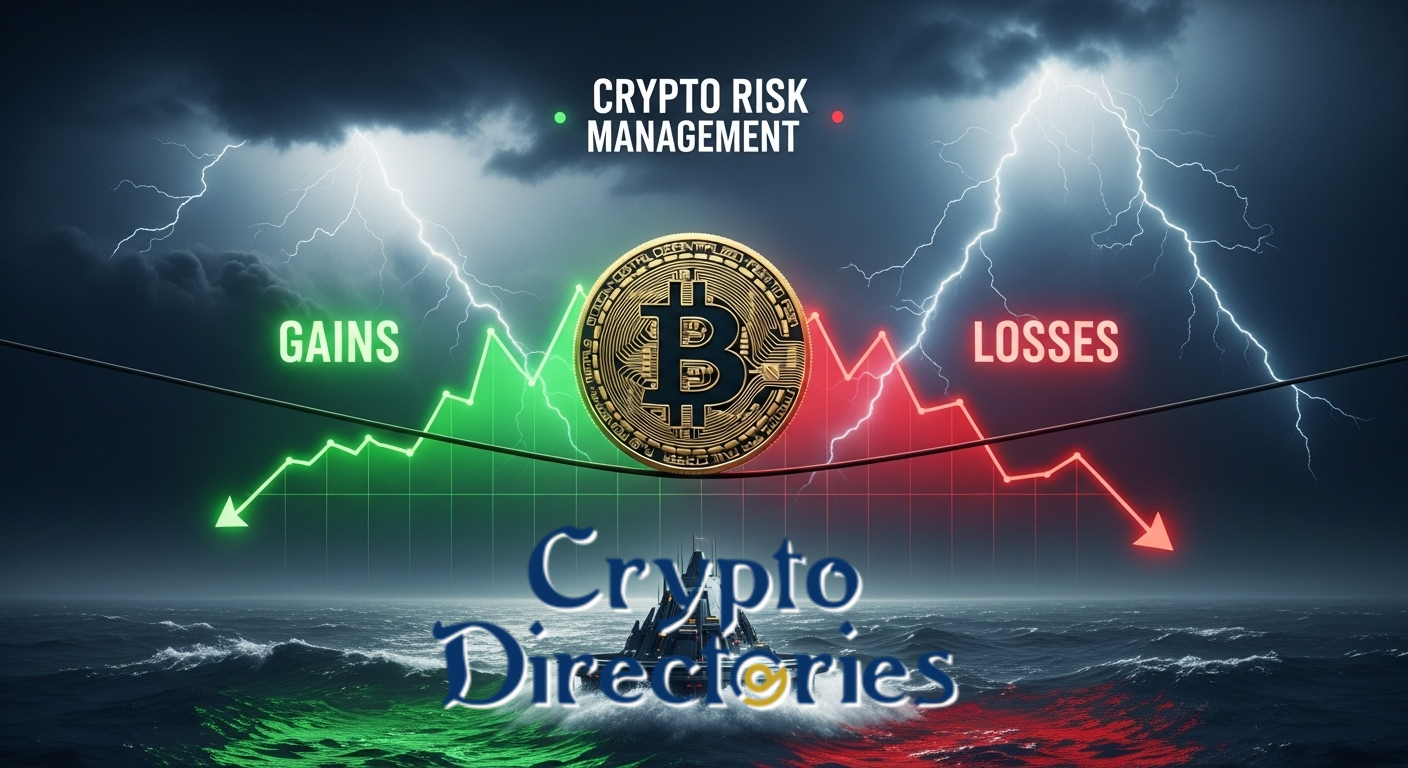In the world of cryptocurrency, where prices can rise or fall dramatically within hours, risk management is not just a strategy — it’s a necessity. Whether you’re a seasoned trader or a new investor, having a clear plan to manage risk is essential to survive and thrive in the volatile crypto landscape.
This guide will walk you through the fundamentals of crypto risk management, best practices, tools, and techniques to help you avoid common pitfalls and make smarter decisions.
⚠️ What Is Risk Management in Crypto?
Risk management in cryptocurrency refers to the practice of identifying, analyzing, and minimizing potential financial losses in trading or investing.
In a market known for massive gains and equally massive losses, protecting your capital is just as important as growing it.
📊 Why Risk Management Matters in Crypto
- Extreme Volatility: Prices can swing 20%+ in a day.
- Leverage Dangers: Leveraged trades can amplify losses.
- Emotional Decisions: Fear and greed often drive poor choices.
- Scams and Hacks: Unregulated spaces expose users to security threats.
Without a risk management plan, even profitable strategies can lead to eventual ruin.
🔑 Key Principles of Crypto Risk Management
1. Only Invest What You Can Afford to Lose
Never risk your rent, savings, or emergency funds.
2. Use Position Sizing
Decide how much of your portfolio to risk on a single trade. Many traders limit this to 1–3% per position.
3. Set Stop-Loss Orders
Automatically close trades that fall below a certain price to cap losses.
4. Diversify Your Portfolio
Don’t go all-in on one asset. Spread your risk across:
- Bitcoin and Ethereum
- Altcoins
- Stablecoins
- Real-world assets (optional)
5. Avoid High Leverage
While tempting, 10x or 50x leverage increases risk dramatically. Use leverage conservatively.
6. Have an Exit Plan
Know when you’ll take profits or cut losses. Don’t rely on emotions.
🧠 Understanding Your Risk Tolerance
Are you risk-averse or a risk-taker? Understanding your personal risk profile can help guide your investment choices.
Consider factors like:
- Age and income stability
- Financial goals
- Market knowledge
- Emotional discipline
The best risk management plan is one that fits your unique profile.
🛠️ Tools for Risk Management in Crypto
- Stop-loss and take-profit orders
- Portfolio trackers (e.g., CoinStats, Zerion)
- Risk calculators for leverage trading
- Cold wallets for long-term storage
- Reputable exchanges with insurance features
🤖 Automating Your Risk Strategy
Using bots or trading platforms, you can:
- Set automatic exit points
- Rebalance portfolios
- Monitor market conditions 24/7
Automation removes emotion — a key factor in reducing costly mistakes.
🧩 Common Risk Management Mistakes to Avoid
- Ignoring market trends
- Overexposure to one coin
- Trading without a plan
- Chasing losses
- Holding forever without reevaluation
🔗 Related Insight
Want to explore platforms that support secure, diversified crypto investments?
Check out our Crypto Directories — a trusted resource for discovering verified crypto platforms and tools to help you manage your portfolio with confidence.
✅ Final Thoughts
Managing risk is one of the most overlooked — yet most important — aspects of crypto investing. While everyone dreams of hitting it big, lasting success comes from protecting your capital and making smart, sustainable moves.
Make risk management your foundation, not an afterthought. Trade wisely, invest intentionally, and always plan for the worst while hoping for the best.
🔒 Secure your future: Visit CryptoDirectories.com to explore risk-conscious platforms and learn more.


